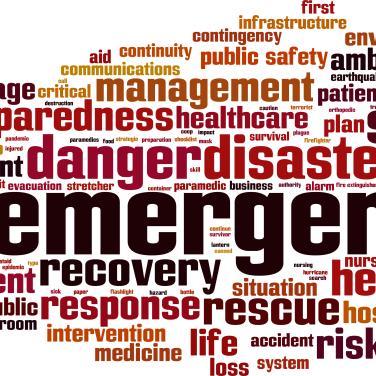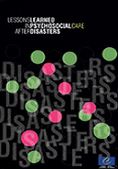Reports on psychosocial care after a disaster
In this resource, you find latest reports by Standing Committee on Crisis and Disaster members on psychosocial care after a disaster in their own country.

In this resource, you find latest reports by Standing Committee on Crisis and Disaster members on psychosocial care after a disaster in their own country.

Imatra shooting incident Finland report
This document describes some of the examples of the psychosocial support given after an emergency. It is the result of the work of the Standing Committee on Crisis and Disaster Psychologists of the European Federation of Psychologist Associations (EFPA).The examples are randomly chosen and of course there are many more examples which could be described. It is of great importance that we learn from our experiences, that we collect the best practices but also look into the things which went wrong. We realize that a disaster means chaos and that we will never be able to plan for every possible scenario. But we have the responsibility to go for the best.
The Standing Committee on Crisis and Disaster Psychologists has reviewed the different examples and has come to some general conclusions. These conclusions are open for discussion.
Lessons learned European countries 2008 2015
20.04.2014 Airplane crash in Jämijärvi Finland report
On 4 October 2010, the wall of a giant reservoir of an alumina factory collapsed near Ajka, Hungary. The reservoir contained the caustic by-product of aluminium production (the so-called red sludge). Approximately one million cubic meters of red sludge – diluted by recent heavy rainfalls – flooded three nearby settlements and approximately 40 square kilometres of land. Some components of the mud were seriously hazardous. It polluted the ecosystem, caused chemical burns on humans and animals, and there were incidences of upper respiratory catarrh due to inhalation of the fine fugitive dust of the desiccated mud.
The outburst was unanticipated and sudden, leaving no chance for preventive evacuation. In addition, neither the locals nor the first responders had appropriate information about the hazardous qualities of the material. This lack of information resulted in confusion that had a negative effect on the first attempts of interventions
The red sludge flooded three settlements and the surrounding arable lands. 718 people were permanently evacuated. There were serious casualties: 10 people died, 286 required medical attention, and 120 people were hospitalised (Hajaajaajas 2011).3 Some first responders were also injured as initially they did not wear appropriate protective gear due to the mixed messages about the hazardous nature of the sludge.
Several residential buildings, public properties, industrial and commercial establishments were ruined. A total of 364 properties had become uninhabitable or needed reconstruction. 810 hectares of agricultural land were covered with sludge (Vágf öldi 2011).
As psychosocial interventions are of great importance throughout the entire crisis management process, experts should be delegated into mid-level CMS leadership.
08.03.2010 Turkey, Elazığ - EARTHQUAKE - Mehmet Ecevit, A. Nuray Karancı, İlknur Öner .
28.05.2005 Spain, Barcelona - COLLAPSE OF BUILDINGS - Catherine Perello Scherdel
This document is the result of an inquiry in the different European countries who are a member of the European Federation of Psychologist Associations (EFPA), theStanding Committee on Crisis and Disaster Psychologists.
Every member describes an example of psychosocial care after a disaster in their own country (1999-2004). The examples are randomly chosen and of course there are many more examples which could be described.
